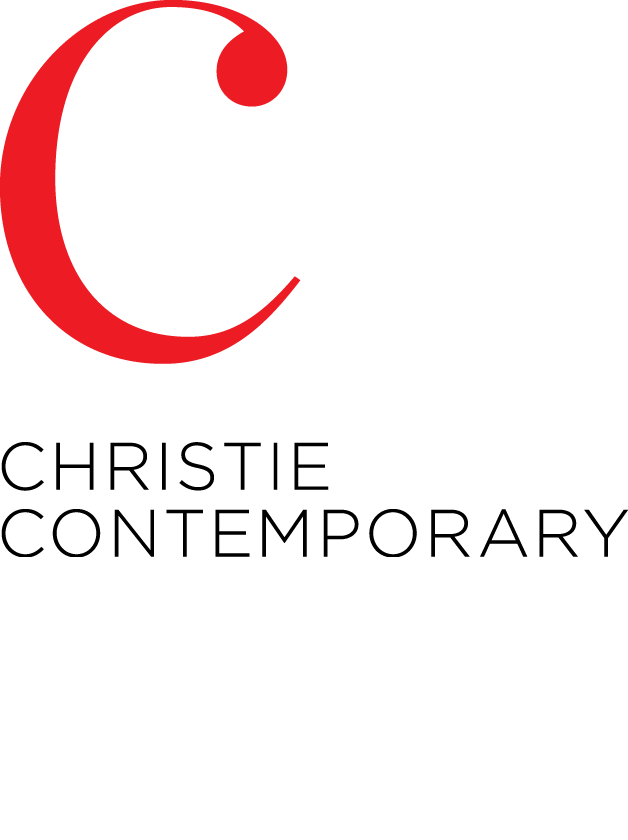The Remembering Kind
Larissa Tiggelers
Christie Contemporary, Toronto
September 6 – October 5, 2024
Puzzles and Problems: Larissa Tiggelers’ Compositional Doublings in The Remembering Kind
Blair Fornwald
The difference between a puzzle and a problem is that a puzzle has one solution, while problems can have many solutions, only imperfect solutions, or none at all. Handled with imprecision, they may resurface, metastasize, or multiply, so even after they are addressed, they can continue to haunt us with the persistent threat of their return. As long as the possibility of a better solution always remains, the problem, in a sense, also remains.
A puzzle, conversely, always contains the promise of its eventual completion. At the beginning of the COVID-19 pandemic, many of us did jigsaw puzzles to pass time, soothe our addled nerves, and hack our neuromodulatory systems into feeling a sense of accomplishment during a period of remarkable monotony and rapidly multiplying problems. Now, while the effects of the pandemic still linger, the locus of our collective anxiety coalesces around one seemingly unsolvable problem after another. Absurdly and insidiously, we are expected to carry on, managing day-to-day tasks and stressors as if we weren’t simultaneously witnessing a genocide, the rise of fascism, and the ongoing destruction of our environment. It’s a lot to process.
While Larissa Tiggelers’ hard-edge abstractions in The Remembering Kind feel like a welcome reprieve from these categorically awful problems, they also offer oblique reflections on them. Though they resemble puzzles, they elude any attempts we may make to solve them.
On either side of crisp vertical divides that split her paintings down the middle, the artist presents near-symmetrical, non-objective compositions that invite comparison or suggest a sequential progression between left and right. At first glance, they remind me of those “spot the difference” puzzles you might see in kid’s magazines, but they are also quite amenable to narrative or anthropomorphic interpretation, a rarity for non-objective works. Their double format is rich with associative potential: they are like the before-and-after images used in weight-loss or tooth-whitening ads, adjacent film stills capturing subtle movement, or a pair of portraits in a hinged frame or locket.
Doubling invites the outside in. It amplifies theatricality by suggesting a performative interplay between the two entities. The forms on the left and right of slow next to them, for instance, appear to inhale and exhale like bodies, or crest and fall like waves. And the longer one looks at paintings like two-folding over and not altogether different, the more they disorient and confuse. Their compositions appear to fold and mirror each other, not only along the vertical axis—a strategy Tiggelers has established throughout this body of work---but also along horizontals and diagonals, inverting, flipping, and swapping pieces back and forth across numerous divides.
The parameters of Tiggelers’ work expand and unfold temporally. Compositions that first appear to be rational, restrained, and logical refuse to stay still and make sense for long. The artist attunes our senses to notice subtler differences and asymmetries, not only to recognize compositional doppelgängers, but see how physical and perceptual phenomena can produce similar effects.
Tiggelers’ use of colour is particularly precise. She uses quaternary hues almost exclusively: complex, specific colours with evocative, Patrician names: glaucous, gamboge, feldgrau, verdigris, cordovan, champagne, Paris green, French grey. The relationships she establishes in her compositions reveal colour’s dynamic and relational aspects, sometimes boldly, but more often with incredible subtlety. A painting may contain variant hues so similar their differences may not fully register; to most, citron is too mindaro is too chartreuse is too lime. Conversely, a single colour may approximate multiple shades, tints, and tones, its proximity to adjacent colours affecting its relative value and chroma.
And though Tiggelers’ paintings initially appear perfectly flat, when closely observed, their clearly-delineated, solid-coloured geometric forms seem to rise from and sink into the surface of the image. In part, this movement is illusory; cool tones appear to recede into the background while warm tones advance toward us. But there are also physical gradations within Tiggelers’ paintings. If I were to run my fingertips over their porcelain-smooth surface, I could feel the tape-line contours that trace the edges of each form and create topographical distinctions. If I looked askance, running my eye along one of these seams, could I see the layers of paint comprising a form? Maybe. Almost.
I am tempted to call these paintings deceptive, but they are too generous for that. They are tricky, not because they withhold information, but because they present information that exceeds or contradicts the expectations implied by their format. This information slips past us; we don’t expect it, so we don’t see it. Such is often the case when we presume problems are puzzles. Tiggelers’ quiet, curious paintings demonstrate a process of reconciling with uncertainty and complexity. They feel like safe surrogates for managing everyday anxieties,
their slow reveals demonstrating the ways our senses betray us, then offering gentle course correction.
Blair Fornwald (they/she) is a curator, writer, and artist living in Winnipeg, Manitoba, Treaty One Territory, and the homeland of the Red River Métis Nation.
